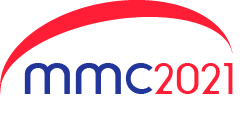Extreme Light-Matter Interactions in the Ultrafast Transmission Electron Microscope
- Abstract number
- 260
- DOI
- 10.22443/rms.mmc2021.260
- Corresponding Email
- [email protected]
- Session
- Stream 2: EMAG - Instrumentation Development (incl Detector technology)
- Authors
- Prof. Ido Kaminer (1)
- Affiliations
-
1. Technion
- Keywords
Quantum electrodynamics, Plasmonics, Nanophotonics, Ultrafast electron microscopy, PINEM, 2D materials
- Abstract text
Over the past few years, quantized interactions between coherent free electrons and femtosecond laser pulses have shown intriguing new prospects for light-matter interactions.
The talk will present theory and experiments of free electrons in laser-driven (ultrafast) transmission electron microscopy. Our experiment achieved what is, in many respects, the most powerful nearfield optical microscope in the world today. We resolve photonic bandstructures as a function of energy, momentum, and polarization, simultaneously with capturing the temporal dynamics and spatial distribution of the photonic modes at deep-subwavelength resolution. Recently, we used these new capabilities to observe coherent free-electron interactions with light trapped in photonic crystals and with polariton wavepackets in 2D materials.
At the base of these contributions lies the ultrafast transmission electron microscope (UTEM) that we built at the Technion. The UTEM offers five degrees of freedom to measure the interactions between light and free electrons: Δt delay between the light (“pump”) and the electron (“probe”), λ wavelength, ϕ polarization, θ sample tilting angle, and the spatial distribution in the xy plane. The UTEM creates a coherent interaction between a free electron and a photonic cavity; each electron is dressed into a quantum energy ladder equally spaced by the photon energy ℏω. Electron energy spectrum measurement show a spatial-analogue of Rabi oscillations on the quantum energy ladder of a free electron. These measurements represent the excellent agreement with the quantum theory, versus a mismatch with the classical theory. We used coherent electron–light interaction used for direct imaging of photonic crystal Bloch modes, measured at different angles, wavelengths, and polarizations (TE/TM). Our experiments showed more than an order of magnitude enhancement in the interaction strength in comparison with the previous record.
I will explain how such capabilities enable creating a free-electron qubit, and discuss the new capabilities that such electron qubits provide for probing quantum materials.
- References
[1] N. Rivera and I. Kaminer, Light–matter interactions with photonic quasiparticles, Nature Reviews Physics 2, 538–561 (2020)
[2] R. Dahan†, S. Nehemia†, M. Shentcis, O. Reinhardt, Y. Adiv, X. Shi, O. Be’er, M. H. Lynch, Y. Kurman, K. Wang and I. Kaminer, Resonant phase-matching between a light wave and a free-electron wavefunction, Nature Physics 16, 1123-1131 (2020)
[3] K. Wang, R. Dahan, M. Shentcis, Y. Kauffmann, A. Ben-Hayun, O. Reinhardt, S. Tsesses, I. Kaminer, Coherent Interaction between Free Electrons and Cavity Photons, Nature 582, 50 (2020)
[4] M. Shentcis, et al., Tunable free-electron X-ray radiation from van der Waals materials, Nature Photonics 14, 686–692 (2020)
[5] O. Reinhardt†, C. Mechel†, M. H. Lynch, I. Kaminer, Free-Electron Qubits, Annalen der Physik 533, 2000254 (2021).
